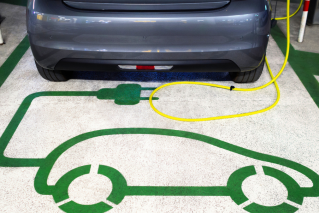There are other villains at the banking inquiry


Both sides of politics have played down the housing credit bubble. Photo: Getty
ANALYSIS
Bank hating reached something of a crescendo on Tuesday, as the first bank CEO was quizzed in Canberra by members of the House of Representatives Economics Committee.
The bankers deserve a roasting for any number of failings – mis-selling products, charging outrageous fees and selling rip-off insurance policies to name a few.
However, while all this rage is directed at banks, there’s a danger of forgetting the role politicians have played in turning the once-benign sector into a proverbial ‘vampire squid’.
Whatever else the bankers are guilty of, one of the big problems they’ve created within the Australian economy is a result of ‘just doing their job’.
Bankers are supposed to maximise profits for their shareholders within the regulatory environment in which they find themselves.
And so they have. But in the process they have shackled Australians to among the highest levels of household debt in the developed world.
And it all happened while politicians stood back and did nothing.
The governments of John Howard, Kevin Rudd, Julia Gillard, Tony Abbott and Malcolm Turnbull all pretended that the debt bubble was some kind of natural event. It’s nothing of the kind.
Before the GFC, it was due to lax prudential regulation and the capital gains tax reforms of the Howard era, in toxic combination with existing negative gearing laws.
During and after the GFC it was due to a series of first homeowner grants and low interest rates – plus restrictions on lending that only arrived when the bubble was near its peak.
The principal problem
The average mortgage taken out 16 years ago, when converted into today’s dollars, would be worth $200,000. Today, the average is $361,000, according to the ABS.

Young home buyers are stuck with large principal repayments.
Those figures hide a lot of complexity – for instance, the size and condition of the homes bought and sold with those mortgages, and the relative proportions of investors and owner-occupiers.
Nonetheless, there’s no getting away from the fact that over those years the average mortgage size increased 80 per cent in real terms.
This took place in two distinct phases. In the first, between the year 2000 and the start of the GFC, the RBA set interest rates at an average 200 basis points higher than in the second phase – the post-2008 era.
So a low rate of 4.5 per cent today might have been more like 6.5 per cent in the pre-GFC years.
If those rates were applied to the two loan amounts above on a 25-year mortgage, a $200,000 borrower gazing into a future in which they expected an average interest rate of 6.5 per cent, would kiss goodbye interest payments of $208,000 over the life of the loan.
The $361,000 borrower, if assumed to pay a ‘new normal’ lower interest rate averaging 4.5 per cent over the life of the loan, would spend just a bit more – a total of $243,000.

Joe Hockey was wrong about affordable housing. Photo: Getty
That’s the sort of calculation that former treasurer Joe Hockey had in mind when he said it was “more affordable than ever to borrow money for a first home”.
Wrong, Mr Treasurer
Actually, for practical purposes, he was dead wrong.
Most people who buy homes are not just ‘renting’ them via interest payments. They intend to pay them off before retirement.
That means the principal borrowed is as much a problem as the interest bill.
And in the above examples, the $200,000 borrower would take $667 out of their pay packet to cover the principal each month, whereas the $361,000 borrower would wave goodbye to $1203.
Who benefits from the $537 difference? It’s not the businesses the young homeowner would like to spend it with.
As economist Saul Eslake told me on Tuesday, the people who pocket that difference are “yesterday’s home buyers” who bought homes cheaply, but who will sell to new generations buying very expensively.
The problem is that historic inter-generational transfer of wealth is neither repeatable nor economically efficient. It’s a misallocation of capital on a grand scale.
Blame Canberra
Politicians and regulators created the tax policy, interest rate policy and prudential regulations within which that historic run-up in house prices and debts took place.
Banks, who saw a decline in their ‘net interest margin’ (see chart above), were able to maintain large profits by simply lending much greater sums of money.
So while bankers deserve the grilling they’re getting this week for negligence and deception in other areas of their operations, save a bit of bile for the politicians.
Labor finally reversed its position on negative gearing and the capital gains tax distortions at this year’s election, but the Turnbull Coalition decided for political reasons to dig in and maintain them.
That’s as much an assault on the next generation of home buyers as anything the banks are doing.
When this period of economic history is written up in years to come, it won’t only be the bankers who are remembered as villains.
To read more columns by Rob Burgess click here.









